Abstract
Isoproterenol (ISO), a drug which causes an increased strength of myocardial contraction when administered to animals in μg/kg doses, causes myocardial necrosis when given mg/kg doses. Previous studies suggested that necrosis might be due to flooding of the heart muscle cells by calcium. To determine if this is true, and to distinguish between flooding due to release of Ca from sequestered intramyocardial compartments and increased influx from the blood, we have measured total myocardial calcium ([Ca]m) after ISO administration. The concentration of myocardial calcium, measured by atomic absorption spectroscopy after dry ashing, increased within 10 minutes of the intraperitoneal injection of ISO in rats. After 10 minutes the [Ca]m remained constant at its new level for at least 50 minutes if the dose of ISO was 102 μg/kg or less but continued to rise at a slower rate than noted during the first 10 minutes if the ISO dose was 103 μg/kg or more. As measured 1 hour after ISO administration, the increase in [Ca]m, was proportional to the dose, up to 102 μg/kg. At higher doses there was no further increase until the dose exceeded 2 × 103 μg ISO/kg. Since the amount of necrosis is proportional to dose from about 102 to 105 μg/kg, while the changes in [Ca]m are not proportional to dose over this entire range, it is concluded that ISO-induced myocardial necrosis is not mediated exclusively by flooding of heart muscle with plasma-derived calcium, although this is undoubtedly an important factor. This conclusion was further supported by experiments showing that propranolol, at doses which completely suppressed the increase in [Ca]m due to ISO, did not completely prevent necrosis.
Full text
PDF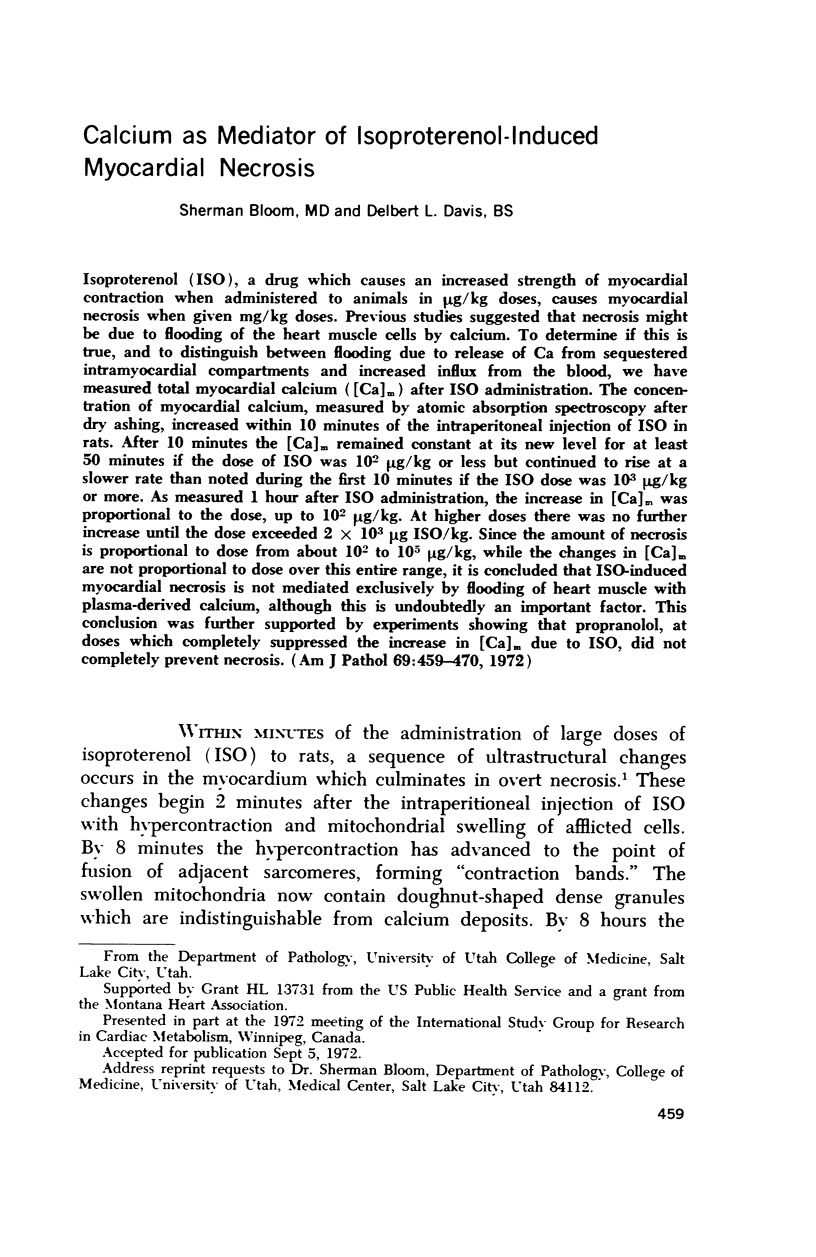
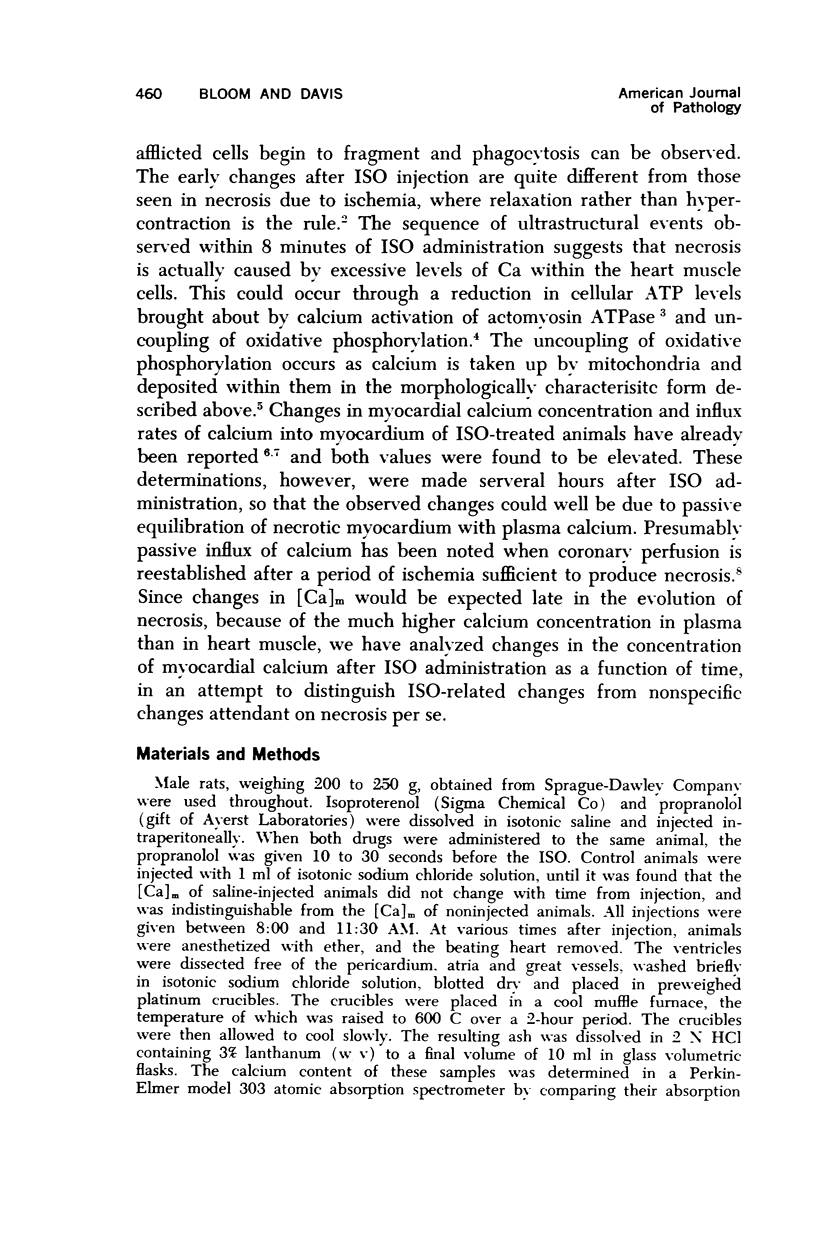

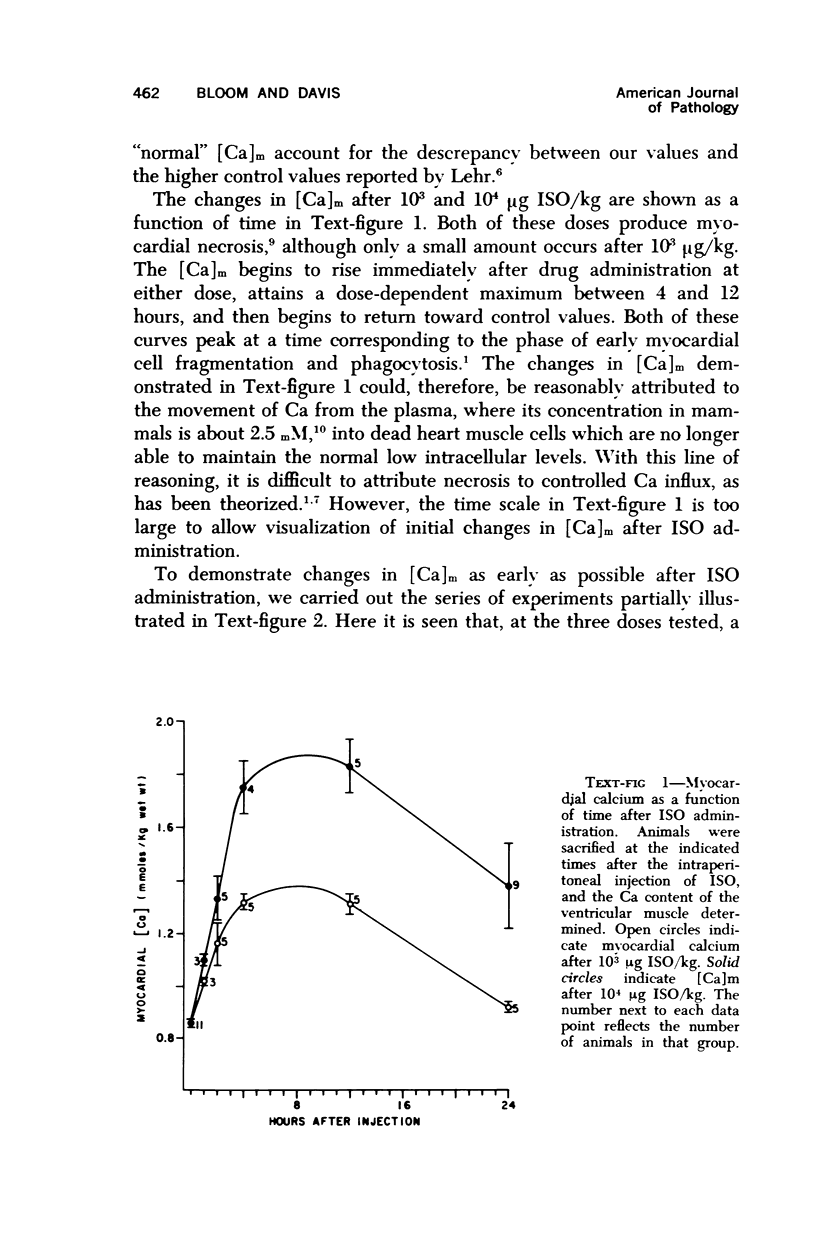
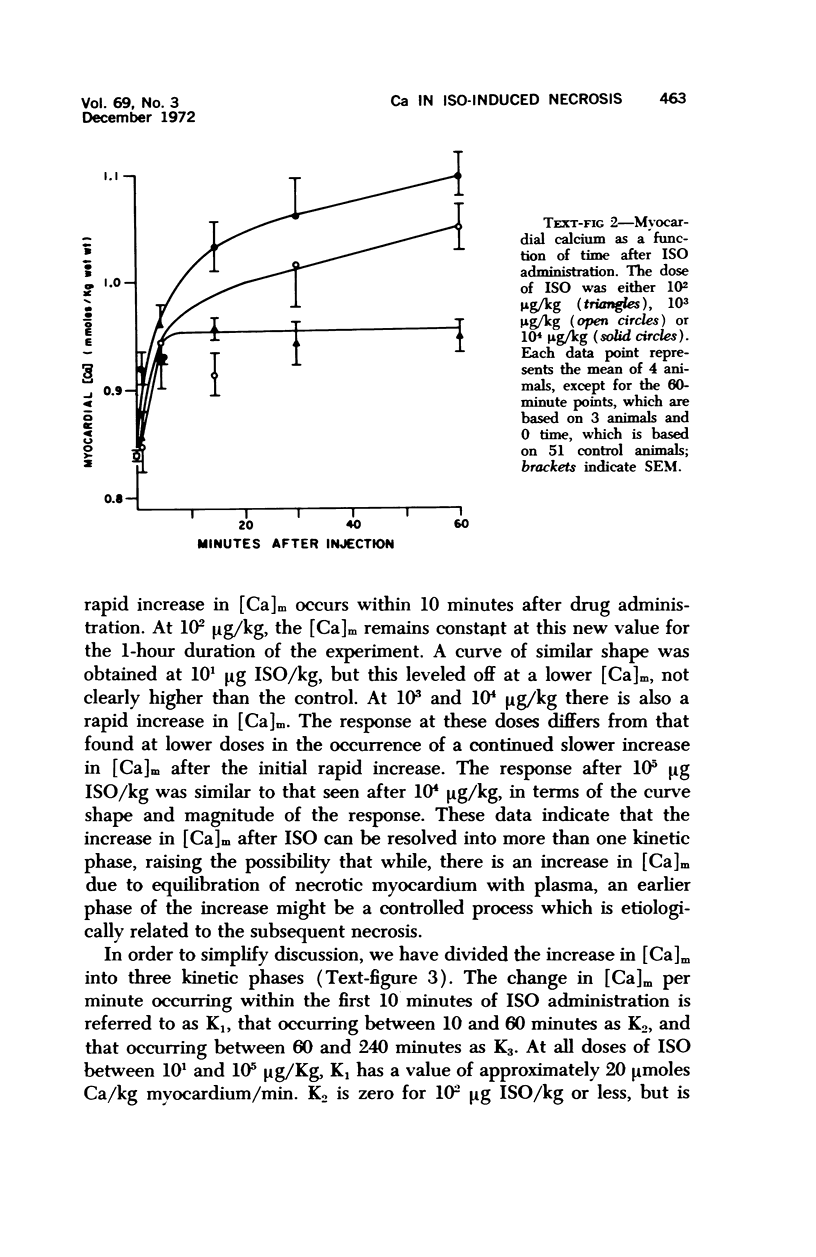
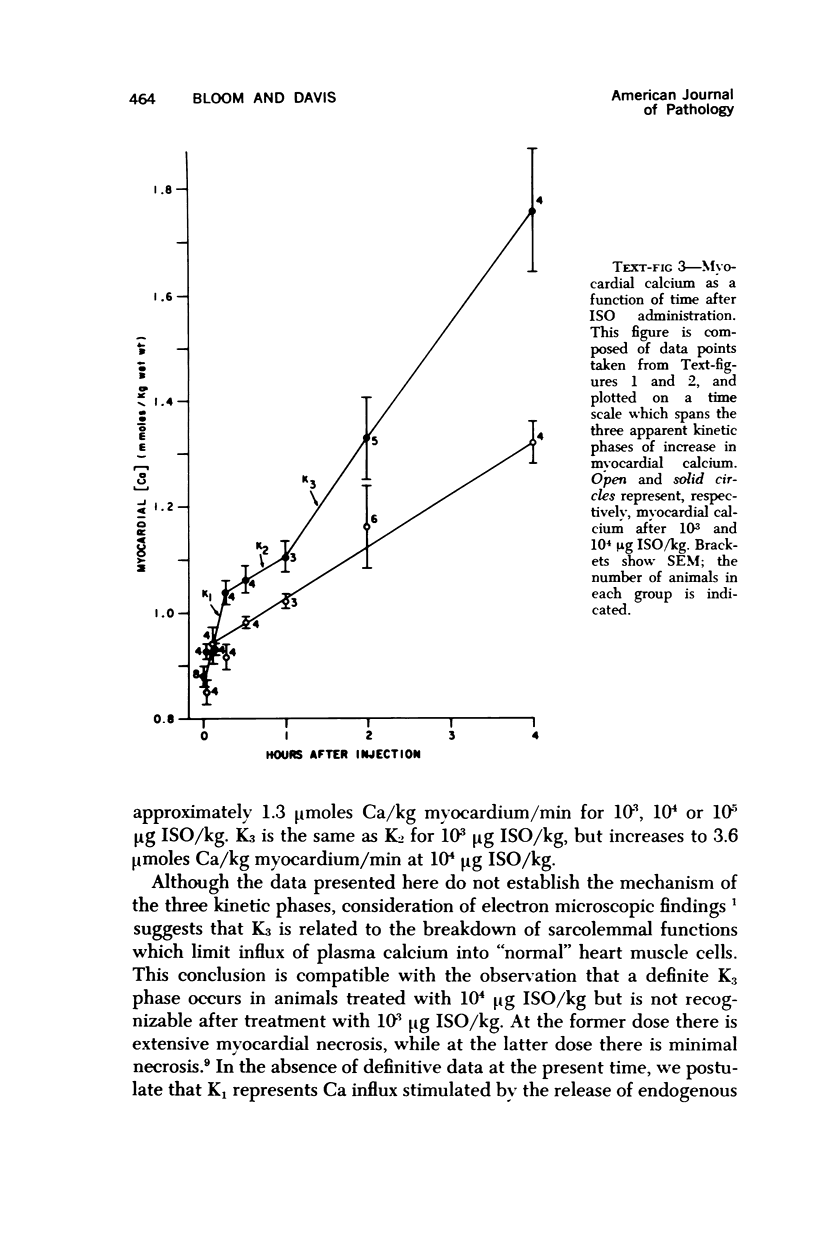
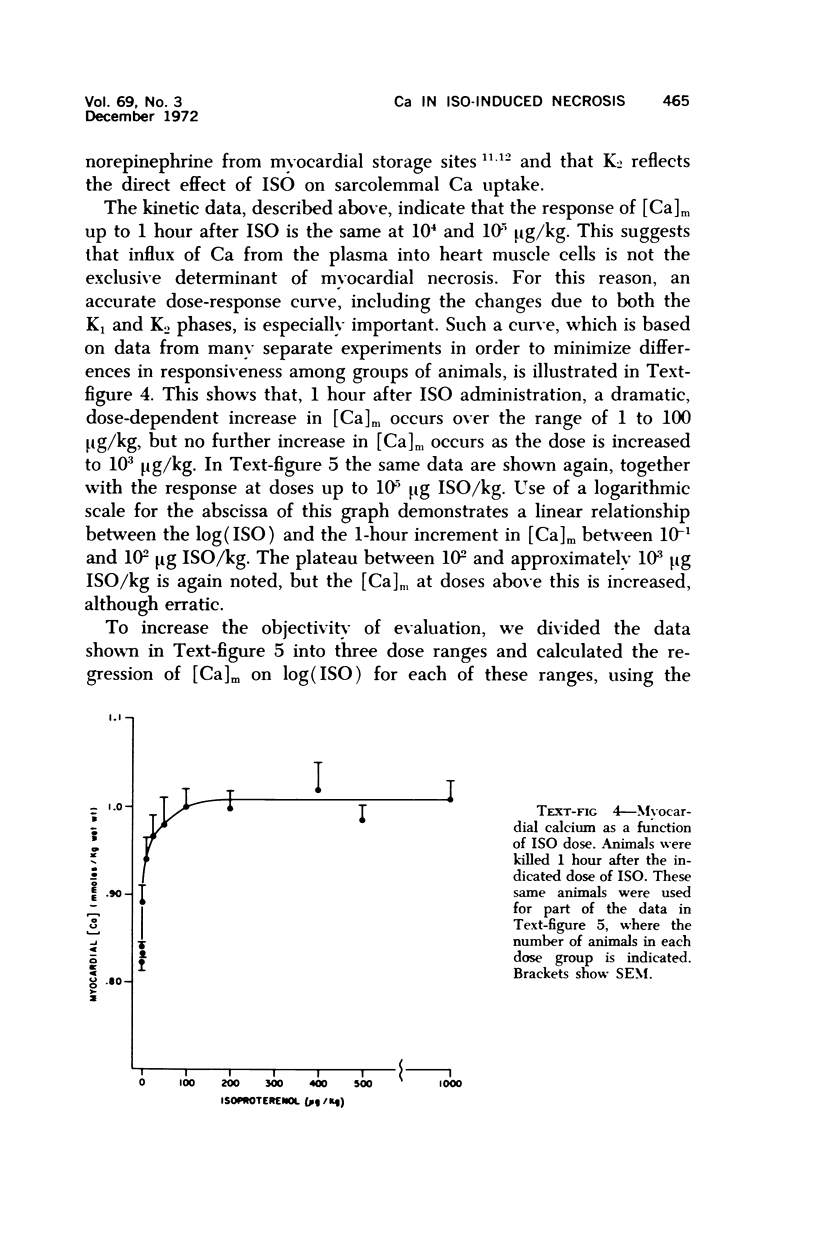
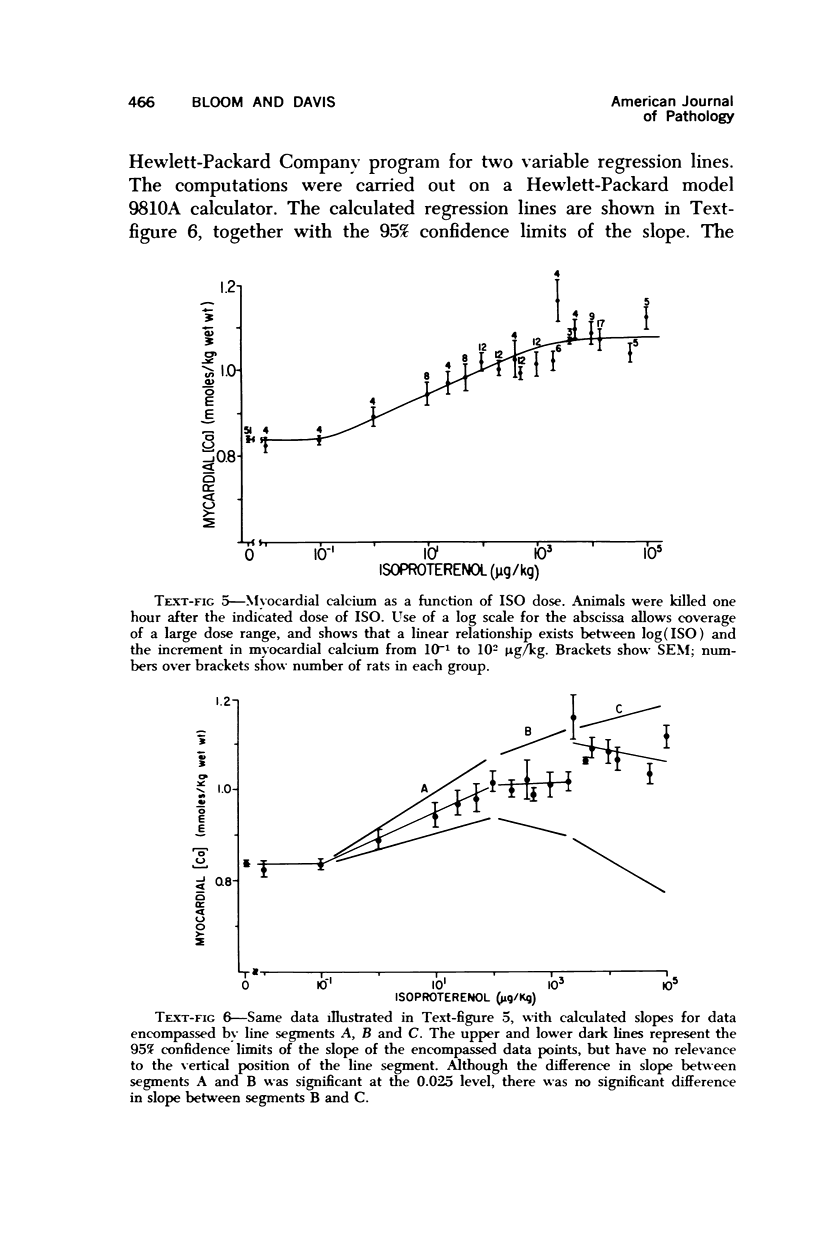
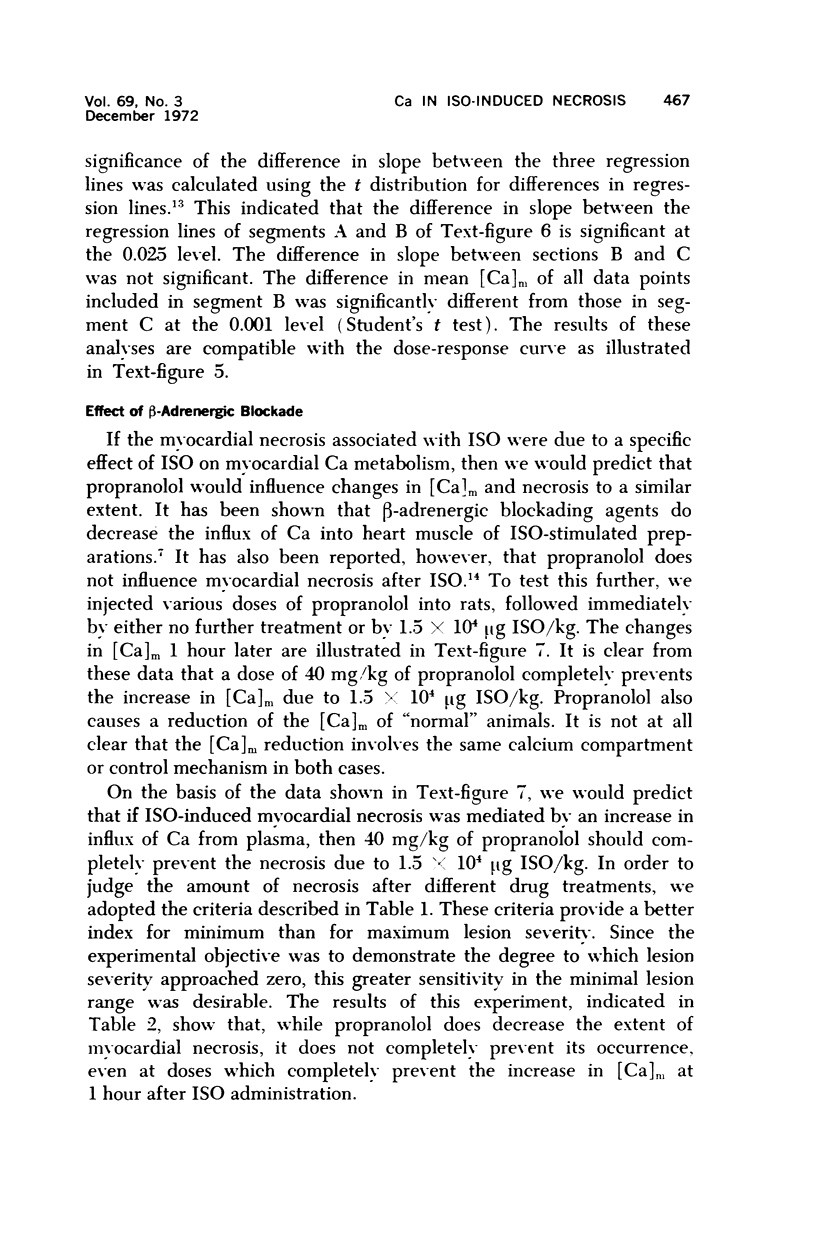
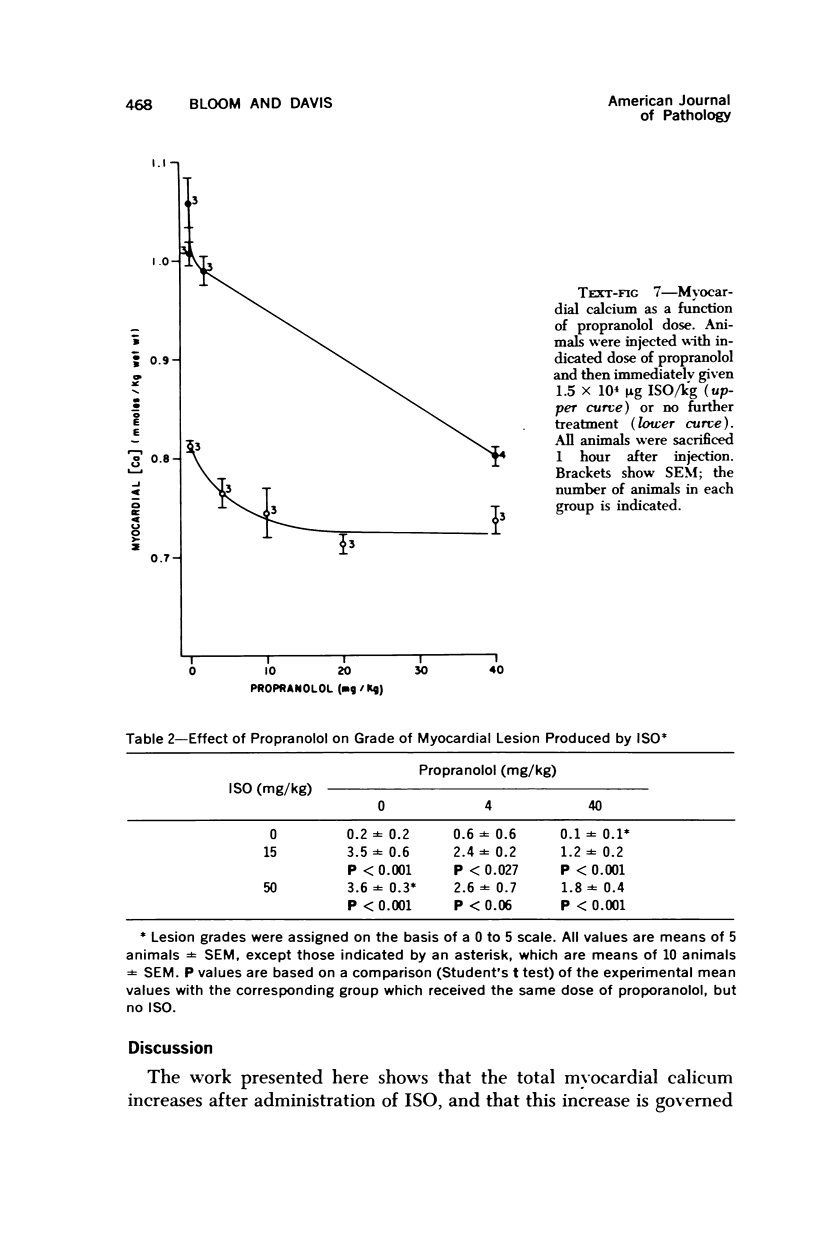
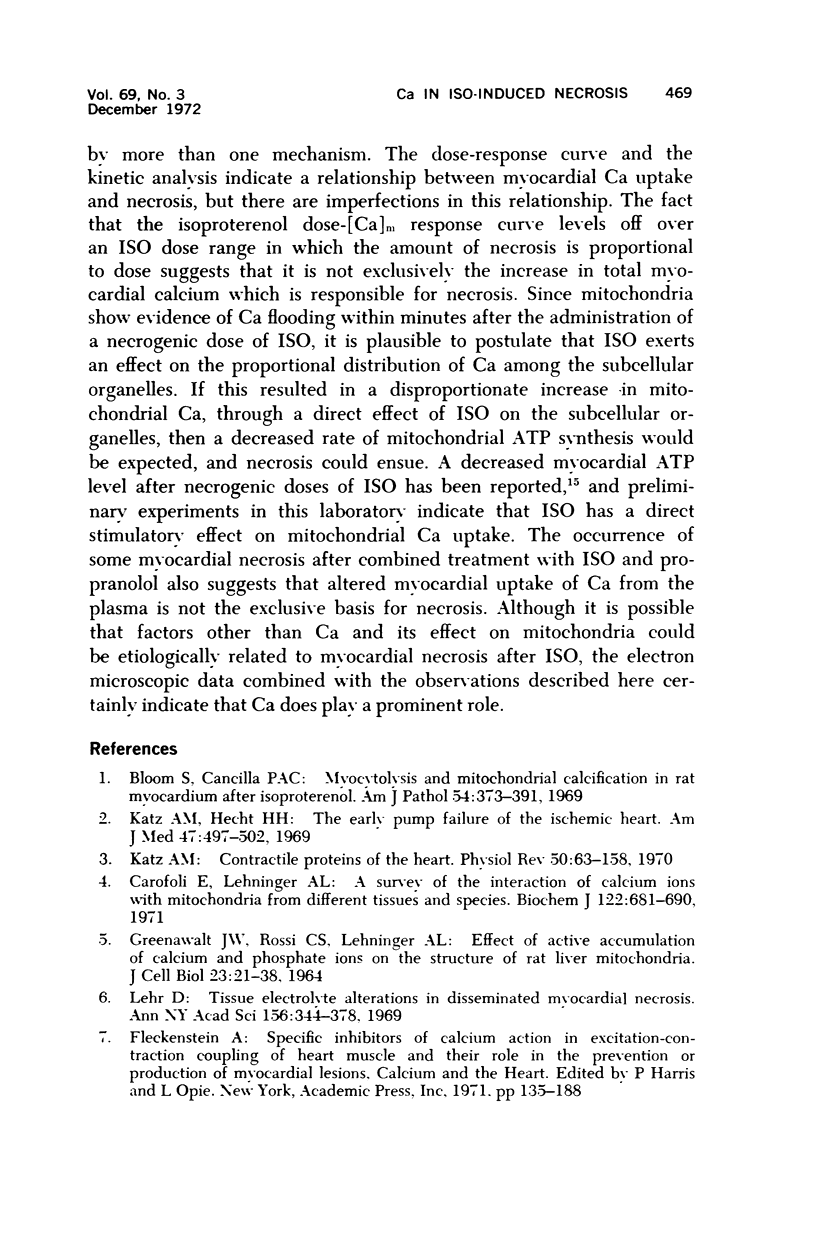
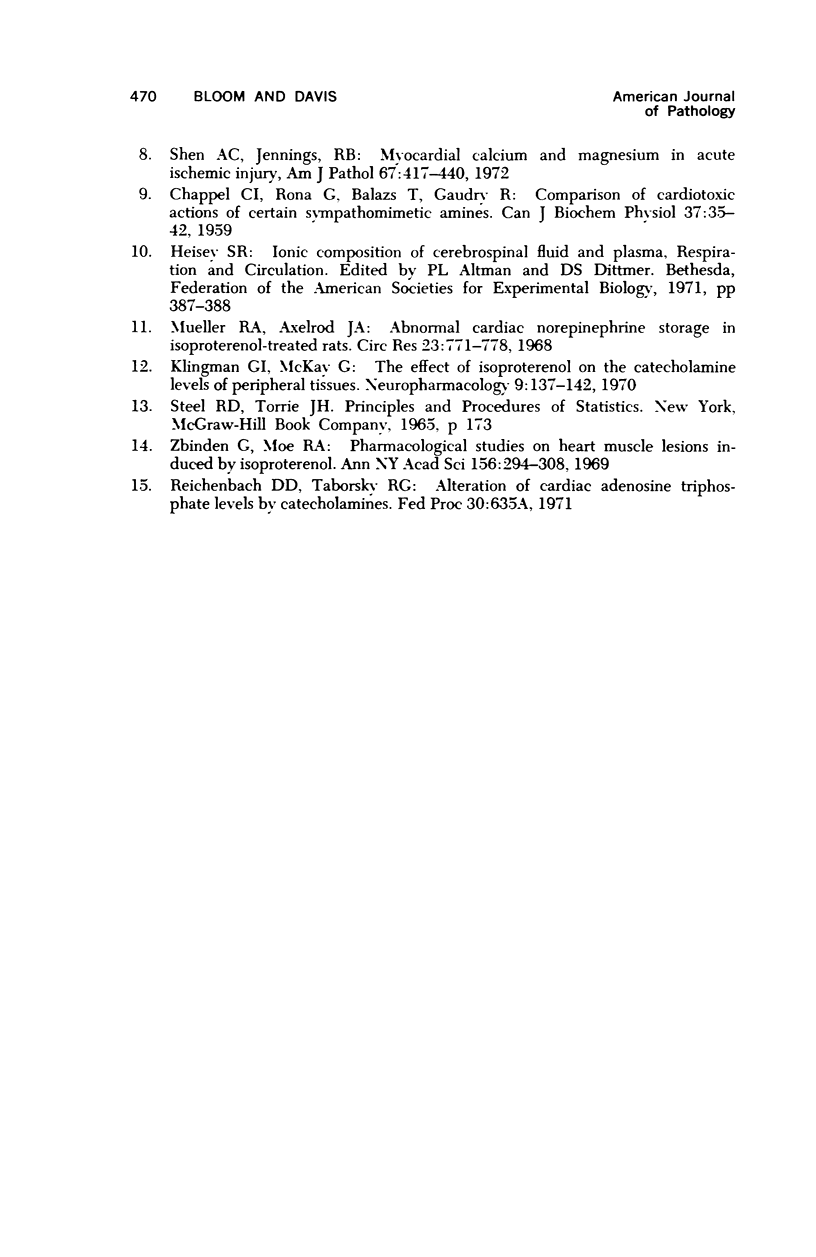
Selected References
These references are in PubMed. This may not be the complete list of references from this article.
- Bloom S., Cancilla P. A. Myocytolysis and mitochondrial calcification in rat myocardium after low doses of isoproterenol. Am J Pathol. 1969 Mar;54(3):373–391. [PMC free article] [PubMed] [Google Scholar]
- CHAPPEL C. I., RONA G., BALAZS T., GAUDRY R. Comparison of cardiotoxic actions of certain sympathomimetic amines. Can J Biochem Physiol. 1959 Jan;37(1):35–42. [PubMed] [Google Scholar]
- Carafoli E., Lehninger A. L. A survey of the interaction of calcium ions with mitochondria from different tissues and species. Biochem J. 1971 May;122(5):681–690. doi: 10.1042/bj1220681. [DOI] [PMC free article] [PubMed] [Google Scholar]
- GREENAWALT J. W., ROSSI C. S., LEHNINGER A. L. EFFECT OF ACTIVE ACCUMULATION OF CALCIUM AND PHOSPHATE IONS ON THE STRUCTURE OF RAT LIVER MITOCHONDRIA. J Cell Biol. 1964 Oct;23:21–38. doi: 10.1083/jcb.23.1.21. [DOI] [PMC free article] [PubMed] [Google Scholar]
- Katz A. M., Hecht H. H. Editorial: the early "pump" failure of the ischemic heart. Am J Med. 1969 Oct;47(4):497–502. doi: 10.1016/0002-9343(69)90180-6. [DOI] [PubMed] [Google Scholar]
- Klingman G. I., McKay G. The effect of isoproterenol on the catecholamine levels of peripheral tissues. Neuropharmacology. 1970 Mar;9(2):137–142. doi: 10.1016/0028-3908(70)90057-2. [DOI] [PubMed] [Google Scholar]
- Lehr D. Tissue electrolyte alteration in disseminated myocardial necrosis. Ann N Y Acad Sci. 1969 Jan 31;156(1):344–378. doi: 10.1111/j.1749-6632.1969.tb16739.x. [DOI] [PubMed] [Google Scholar]
- Mueller R. A., Axelrod J. Abnormal cardiac norepinephrine storage in isoproterenol-treated rats. Circ Res. 1968 Dec;23(6):771–778. doi: 10.1161/01.res.23.6.771. [DOI] [PubMed] [Google Scholar]
- Shen A. C., Jennings R. B. Myocardial calcium and magnesium in acute ischemic injury. Am J Pathol. 1972 Jun;67(3):417–440. [PMC free article] [PubMed] [Google Scholar]
- Zbinden G., Moe R. A. Pharmacological studies on heart muscle lesions induced by isoproterenol. Ann N Y Acad Sci. 1969 Jan 31;156(1):294–308. doi: 10.1111/j.1749-6632.1969.tb16736.x. [DOI] [PubMed] [Google Scholar]


